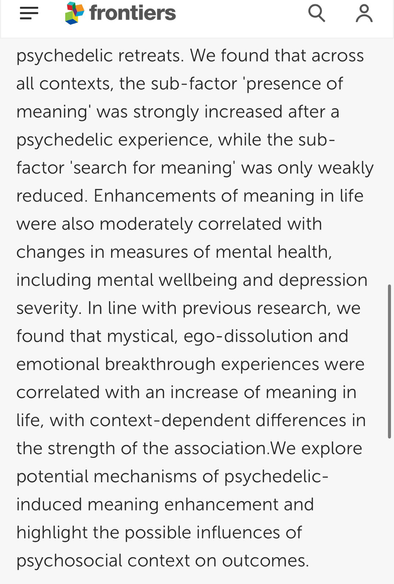The Lord wanted me while in this state to see sometimes the following vision: I saw close to me toward my left side an angel in bodily form. I don’t usually see angels in bodily form except on rare occasions; although many times angels appear to me, but without my seeing them, as in the intellectual vision I spoke about before [cf. Life, 27:2, 28:4]
This time, though, the Lord desired that I see the vision in the following way: the angel was not large but small; he was very beautiful, and his face was so aflame that he seemed to be one of those very sublime angels that appear to be all afire. They must belong to those they call the cherubim, for they didn’t tell me their names.
But I see clearly that in heaven there is so much difference between some angels and others and between these latter and still others that I wouldn’t know how to explain it.
I saw in his hands a large golden dart and at the end of the iron tip there appeared to be a little fire. It seemed to me this angel plunged the dart several times into my heart and that it reached deep within me. When he drew it out, I thought he was carrying off with him the deepest part of me; and he left me all on fire with great love of God.
The pain was so great that it made me moan, and the sweetness this greatest pain caused me was so superabundant that there is no desire capable of taking it away; nor is the soul content with less than God.
The pain is not bodily but spiritual, although the body doesn’t fail to share in some of it, and even a great deal. The loving exchange that takes place between the soul and God is so sweet that I beg Him in goodness to give a taste of this love to anyone who thinks I am lying.
On the days this lasted, I went about as though stupefied. I desired neither to see nor to speak, but to clasp my suffering close to me, for to me it was greater glory than all creation.
Another type of prayer quite frequent is a kind of wound in which it seems as though an arrow is thrust into the heart, or into the soul itself. Thus the wound causes a severe pain which makes the soul moan; yet, the pain is so delightful the soul would never want it to go away. This pain is not in the senses, nor is the sore a physical one, but the pain lies in the interior depths of the soul without resemblance to bodily pain.
Yet, since the experience cannot be explained save through comparisons, these rough comparisons are used (I mean rough when compared to what the experience is); but I don’t know how to describe it any other way. For this reason, these are not things to be written about or spoken of, because it’s impossible to understand them unless one has experienced them. I mention the interior depths this pain reaches because spiritual sufferings are extremely different from physical ones. From this fact, I deduce how much greater the sufferings of souls in hell and purgatory are than what can be understood of them from bodily sufferings here on earth.
Saint Teresa of Avila
The Book of Her Life, 29:13–14
Spiritual Testimonies, 59:17
Among Teresa’s mystical favors, the grace of the arrow merits special attention for two reasons:
- For the precision and repetition with which she describes it, and
- For the impact that it has produced in students, theologians, and psychologists, especially among those resistant to its supernatural origin.
Let us specify:
- Teresa describes these phenomena at least three times in The Book of Her Life, 29:13–14; in Spiritual Testimonies, 59:17; The Interior Castle, VI, 2:4; there are other numerous allusions in her poems and letters. (It is indispensable to read the first two passages).
- This grace lasted or was repeated according to her, for various years, probably at the beginning of 1560 (cf. The Interior Castle, V, 11:1 and 29:14) when Teresa had reached age 45.
- As she herself admits, it was not a bodily phenomenon (“The pain is not bodily but spiritual, although the body doesn’t fail to share some of it, and even a great deal”, The Book of Her Life 29:13), yet in describing it, in the “depths” or in the “heart” she localizes it (metaphorically in both cases): “this pain is not in the sensory part, nor is the sore a physical one, but the pain lies in the interior depths of the soul without resemblance to bodily pain”… (Spiritual Testimonies, 59:17).
- She staged it through the mediation of an angel located outside herself; she herself contextualizes it within an affective process…“increasing the love of God in me to such a degree that I didn’t know where it came from” (for it was very supernatural, The Book of Her Life, 29:8); and, she categorized it as a wound of love… of supernatural origin.
- She never alludes, not even indirectly, to possible traces of this grace in her physical heart pains.
Interpretations and appraisals:
The first to appraise the mystical episode after Teresa is Fray John of the Cross, for he interprets it theologically as a charismatic grace given to Teresa in her function as founder. Then after his interpretation follow the versions of the artists and sculptors, especially among these latter the work in marble done by Bernini. Later they confer on her liturgical honors. And, finally, with the advent of the psychological sciences come naturalist interpretations.
Let us mark three of these:
- Pathological: Doctor R. Novera Santos is sure that we are dealing with a pleasing heart attack;
- Psychoanalytic: among whom are disciples of Freud, H. Leuba is sure that we are dealing simply with erotic phenomena and that when Teresa speaks of the “depths”, one should read “womb, that’s all!”, although Teresa says that it happens in “the interior of the soul”;
- Still in our days, a century later, the hypothesis is formulated of a feminine episode of orgasm (M. Izquierdo), obviously localized in the genital organs, despite the fact that Teresa never alludes to them and that she expressly excludes them in familiar confidences.
They amount to three interpretations lacking an objective foundation: they are contrary to the autobiographical data supplied by Teresa herself.
The supernatural interpretation given coherently by Teresa still stands. as also does the theological appraisal of St. John of the Cross who knows personally and directly what was experienced by Teresa, a good psychologist and, above all, great mystical analyst:
“It will happen that while the soul is inflamed with the love of God,… it will feel that a seraph is assailing it by means of an arrow or dart that is all afire with love… as though it were a sharp point in the substance of the spirit, in the heart of the pierced soul.”
Graces like this are “granted to those whose virtue and spirit were to be dffused among their children” (Living Flame of Love, 2:9, 12). An anonymous allusion to the Teresian episode.
Tomás Alvarez, O.C.D.
Chapter X, no. 96, The Mystery Phenomena
Alvarez T & Kavanaugh K 2011, St. Teresa of Avila: 100 themes on her life and work, ICS Publications, Washington DC.
Featured image: This detail of a photographic artwork created by Elías Rodríguez Picón comes to us thanks to the Discalced Carmelite nuns of Alba de Tormes. The artist’s sister is the model for this scene, which is intended to show the beginning moment of the Transverberation. You can see and read more about his photographic technique in this article from La Hornacina (in Spanish). Image credit: Discalced Carmelites
https://carmelitequotes.blog/2024/08/25/alvarez-arrow/
#angel #fire #goldenDart #mysticalExperience #pain #StJohnOfTheCross #StTeresaOfAvila #TomásAlvarez #transverberation #wound







